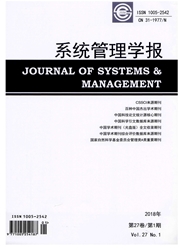

 中文摘要:
中文摘要:
为了分析需求信息延迟对供应链绩效的影响,考虑由一个零售商和一个制造商所组成的两级供应链,顾客需求满足ARMA(1,1)过程。首先从理论上建立需求信息不延迟与需求信息延迟时零售商和制造商订单量波动程度的定量描述模型,通过两种情形下的比较分析得出:当需求自回归系数为正数时,需求信息延迟将减小牛鞭效应,当需求自回归系数为负数时,需求信息延迟将提高牛鞭效应;其次运用仿真方法对需求信息延迟与需求信息不延迟时制造商和零售商的平均成本进行了比较分析,同样得出:当需求自回归系数为正数时,需求信息延迟将降低制造商和零售商的平均成本,而需求自回归系数为负数时,需求信息延迟将提高制造商和零售商的平均成本。
 英文摘要:
英文摘要:
To analyze the impact of demand information delay on order variation and average costs in a supply chain, a two stage supply chain with ARMA(1,1) demand, which consists of one retailer and one manufacturer, is considered. At first, the expressions for quantifying the retailer's and manufacturer's or- der variation when demand information is delayed, and when is not delayed, are developed respectively. It can be shown from comparison analysis between demand information delay and no demand information de- lay that, when demand auto-regression coefficient is positive, demand information delay can reduce the bullwhip effect; when demand auto-regression coefficient is negative, demand information delay can increase the bullwhip effect. Secondly, the simulation analysis is conducted to compare the retailer's and manufacturer's average cost between demand information delay and no demand information delay. It can be also shown that the demand information delay can reduce the retailer's and manufacturer's average costs when demand auto-regression coefficient is positive, and the demand information delay can increase the retailer's and manufacturer's average costs when demand auto-regression coefficient is negative.
 同期刊论文项目
同期刊论文项目
 同项目期刊论文
同项目期刊论文
 期刊信息
期刊信息
